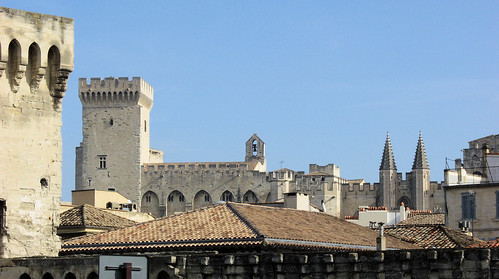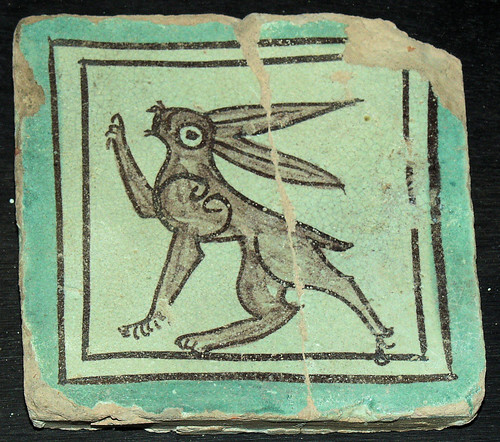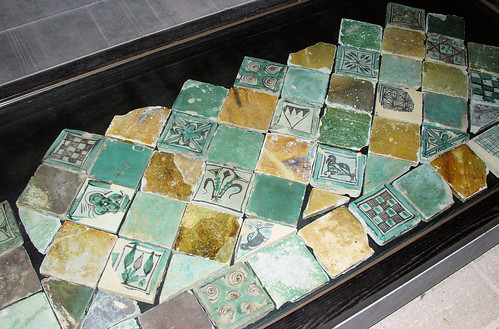I started out my tour of Avignon at the logical chronological point, the archaeological annexe of the Musee Calvet, the grand collection officially founded in 1811 but owing quite a bit to an early 18th-century “cabinetâ€.
It is housed in a surprisingly attractive baroque church (no, I’m not generally a fan of the Baroque, but here at least the decoration overload is contained to a great cornice and the nave and chapels are attractively plain, a good setting for the collection). It did well to survive being a WWI storeroom, and then its use for a beekeeping trade fair (which must have been about the 20s. (It was dedicated for museum use in 1933.)
There’s a small ancient Egyptian collection, of no particular local relevance, but it then moves into Greek vases and Etruscan funerary sculptures reflecting early influences here, before moving into the Roman world.
 What’s striking about that last collection is how you have to read the labels to tell the origins of the piece – they might be from Rome itself, from the Balkans, from the east, but generally you can’t tell which – a reminder of how monocultural the Roman world was, in many respects. This is an unknown woman from the 3rd century AD, of Avignon – but really she could be of anywhere.
What’s striking about that last collection is how you have to read the labels to tell the origins of the piece – they might be from Rome itself, from the Balkans, from the east, but generally you can’t tell which – a reminder of how monocultural the Roman world was, in many respects. This is an unknown woman from the 3rd century AD, of Avignon – but really she could be of anywhere.

The tombstones of children – which I commented on during my tour of Hadrian’s wall – here again are some of the little artistic masterpieces: this is that of Timakratea from Rhodes of the third or fourth century AD.

Nearby is a curious piece, of Eros chasing a giant locust, which has fastened onto a head of wheat. The museum’s commentary (it is well-equipped for the serious visitor with lots of take-away commentary in French and English) says that at first glance this is just a child at play – then as now, children often adopted locusts as “petsâ€, and it was supposed to be a friendly insect. Yet of course it was also a pest, enemy of crops, and one of Apollo’s role was a parnopios (locust-killer). So on this reading, Eros is trying to protect the wheat, to chase away the locust, so expressing his desire for good.
read more »







 About
About